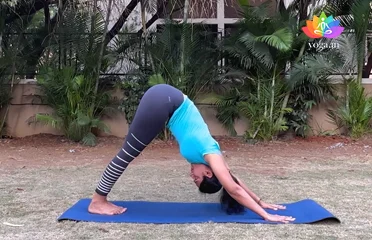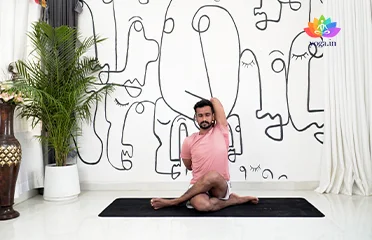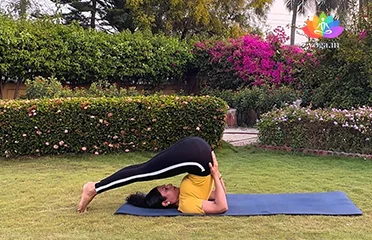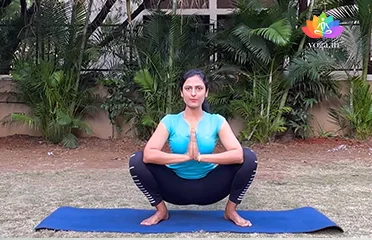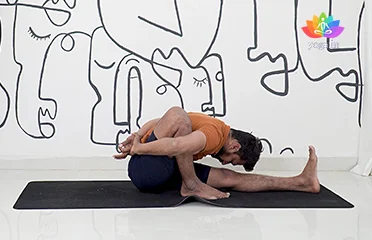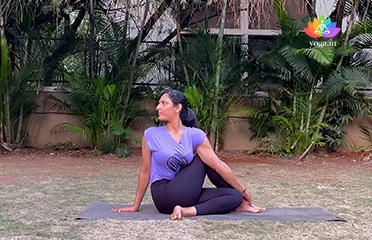Adho Mukha Svanasana (Downward-Facing Do
अधोमुख श्वानासन / Downward-Facing Dog Pose
The sanskrit name is derived from adhas (अधस्) meaning down, mukha [�K]
Gomukhasana (Cow Face Pose)
गोमुखासन / Cow Face Pose
The Sanskrit name is derived from Gau (गो) meaning cow, Mukh meaning face [�K]
Halasana (Plough Pose)
हलासन / Plough Pose
The Sanskrit name is derived from Hala (हला) meaning plough and asana [�K]
Malasana (Garland Pose)
मालासना / Garland Pose
The Sanskrit name is derived from Mala (माला) means garland or rosary [�K]
Marichyasana (Sage Twist Pose)
मरीच्यासन / Sage Twist Pose
The Sanskrit name is derived from Marichya (मरीच्) meaning ray of [�K]
Matsyendrasana (Lord of the Fishes Pose)
मत्स्येन्द्रासन / Lord of the Fishes Pose
The name Matsyendrasana is derived from the Sanskrit words Matsya (मत्स्य) [�K]
How Yoga Can Help Cure Deformity in Arms:
Arm deformities can range from congenital conditions to those acquired through injury or repetitive strain. These deformities can cause pain, limited mobility, and functional difficulties. Yoga can assist in the treatment and relief of arm deformities by improving flexibility, strengthening muscles, and promoting better alignment. Regular practice of specific yoga poses and breathing exercises can enhance arm function and alleviate discomfort.
Understanding Deformity in Arms:
Arm deformities refer to abnormalities in the structure or function of the arm, which can affect the bones, muscles, joints, or nerves. These deformities can be present at birth or develop later due to injury, disease, or repetitive strain. Common examples include congenital conditions like clubfoot, acquired deformities such as fractures that heal improperly, and conditions like carpal tunnel syndrome.
Yoga’s Role in Relieving Deformity in Arms:
Yoga can play a significant role in managing and relieving arm deformities. Specific yoga practices, including gentle stretches, strengthening exercises, and pranayama, can help improve arm mobility and reduce pain. Techniques such as:
- Gentle stretching to enhance flexibility and prevent stiffness.
- Strengthening exercises to build muscle support around affected areas.
- Pranayama to improve circulation and reduce inflammation.
Key Factors Contributing to Deformity in Arms:
Several factors can lead to deformities in the arms, including:
- Genetic predisposition: Inherited conditions can cause congenital arm deformities.
- Injury: Fractures or trauma can lead to deformities if not properly treated.
- Repetitive strain: Overuse of certain muscles and tendons can cause conditions like carpal tunnel syndrome.
- Diseases: Conditions such as arthritis or muscular dystrophy can result in deformities.
Symptoms of Deformity in Arms:
Common symptoms associated with arm deformities include:
- Pain and discomfort: Persistent pain in the arm, which can be sharp or dull.
- Limited mobility: Difficulty in moving the arm or performing daily tasks.
- Swelling and inflammation: Swelling around the affected area, often accompanied by redness.
- Weakness: Reduced strength in the arm, making it hard to lift objects.
- Numbness and tingling: Sensations of numbness or tingling, especially in cases like carpal tunnel syndrome.
- Visible abnormalities: Noticeable differences in the shape or size of the arm.
Treatment of Deformity in Arms through Yoga and Pranayama:
Yoga and pranayama can be highly beneficial for treating arm deformities. Recommended practices include:
Specific Yoga Poses:
- Gomukhasana (Cow Face Pose): Improves shoulder and arm flexibility.
- Bhujangasana (Cobra Pose): Strengthens arm and shoulder muscles.
- Uttanasana (Standing Forward Bend): Relieves tension in the arms and shoulders.
Pranayama Exercises:
- Anulom Vilom (Alternate Nostril Breathing): Balances energy and reduces stress.
- Bhramari (Bee Breath): Calms the mind and alleviates pain.
Diet for Deformity in Arms:
A balanced diet can support the healing process and complement yoga practices. Recommendations include:
- Anti-inflammatory foods: Such as turmeric, ginger, and leafy greens.
- High-protein foods: To support muscle repair, like lean meats, legumes, and nuts.
- Calcium and vitamin D: For bone health, found in dairy products, fish, and fortified foods.
- Hydration: Drinking plenty of water to maintain joint lubrication.
Caution for Deformity in Arms:
When practicing yoga for arm deformities, it is essential to:
- Avoid poses that cause pain or strain in the affected area.
- Start slowly and increase intensity gradually.
- Consult with a healthcare provider or experienced yoga instructor before beginning.
Contraindications for Deformity in Arms:
Individuals with certain conditions should avoid specific yoga practices:
- Those with severe arm injuries should not perform weight-bearing poses.
- People with acute inflammation should refrain from intense stretching.


